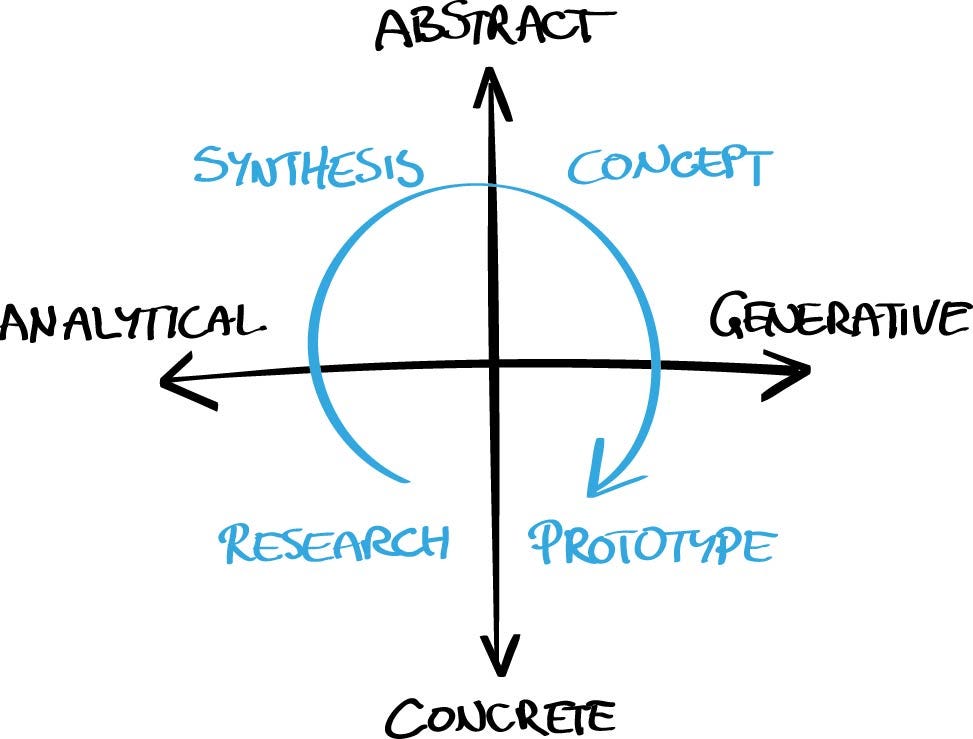Four Skills a Business Designer Needs to Master – Muzli
Four Skills a Business Designer Needs to Master
How to become a Business Designer (2/3) — skills
The Power of Business Design
One of my most impactful memories on the power of Business Design skills dates back to the beginning of my career. I had joined a client meeting with a senior Business Designer. We were a large group, and he remained silent, listening while the others were explaining. Eventually, he summarized their thoughts on the business model and outlined the flaws very clearly: they planned to venture into a new industry that they had little experience in. The market was commodified, low-margin and divided among a few ultra-efficient companies fighting for market shares. The client was impressed that an outsider identified the weakness of their idea directly and clearly. My senior colleague did this by using his Business Design skillset to quickly understand their model and assess it.
I follow the innovation cycle to introduce the four skills a Business Designer needs in order to succeed in her job to create, deliver and capture value.


Research: Market & Customer Research
A Business Designer needs mastery of a wide range of research methodologies, of which I discuss three key methods here.
Firstly, a Business Designer must know how to conduct desk research to quickly dig into the company, market, and industry. This information comes from a wide range of sources, such as articles,
Another key method is to learn from industry experts, who often have a deep and nuanced understanding of the market that cannot be learned from reports. A Business Designer needs to know how to identify and approach them and learn from their expertise. For one project we went to see a banking expert in the lobby of his hotel to discuss the future influence of platforms on the banking industry.
Finally, qualitative and quantitative research methods can be combined in order to identify the need or problem of users and figure out exactly how to create value for them. A Business Designer is able to design, conduct and evaluate quantitative market studies, e.g. to narrow down price preferences of customers. Qualitative methods are combined with that such as interviews and observation to drill deep on understanding needs and user motivations.
Synthesis: Understand the Business, Market and Industry
A business does not exist in a void but competes in a market. A Business Designer understands market dynamics, competitive forces, and industry specifics.
It is important to understand how the market is structured: what are the underlying forces and mechanics? The most relevant players active in the market have to be identified and their value propositions understood. A Business Designer creates benchmarks, thinks about how to leverage proprietary assets and defines unique value propositions.
Moreover, a Business Designer understands her own industry and sees connections and similarities across industries. She spots new trends in an industry early on and re-combines elements from different, unrelated businesses. An example for this is Amazon’s profits moving from e-commerce to cloud services. Once the market is understood a new business model can be designed.
Concept: Design a new Business Model
Business Design is the art of thinking about a business as a complex system. A Business Designer analyses business models and creates her own: how does the company create value and for whom? What is the cost structure and where does the margin come from? How does the company capture value at the moment — and what are potential new areas of business? What are the company’s unique assets and how can they be exploited?
A Business Designer rearranges capabilities and resources to rethink value streams and design profitable business models in a complex environment. Subsequently these concepts can be prototyped and tested.
Prototype: Test your Financial Assumptions
A business without profitability is either a hobby or a charity. A Business Designer creates a compelling and reasonable business case to represent a business model in numbers. This model is used as a prototype for the financial viability of the business idea. A Business Designer knows how to test for the key value drivers of her business model before the costly step of a full implementation.
For example, if frequency of use of your service has the biggest impact on business outcome, the actual frequency should be investigated in a service prototype. In the process the assumptions are translated into numbers — numbers have a far smaller margin for interpretation and self-deception than qualitative concepts, e.g. the business model canvas.
In the later stage of a business the Business Designer defines KPIs and follows a strategy to improve them. Hence, a Business Designer has an analytical mind and a deep understanding of numbers and magnitudes. She is able to make ballpark estimations as well as dig deep into financial models and business reports and understand the key learnings to bring out.
Conclusion: Follow the Cycle
We followed the innovation cycle from research into the market to a prototype of the business. This methodology can be applied on a macro level — for the creation of a business — or on a micro level to verify (or falsify) one aspect of an idea. It helps to realize where in the process you are to get clarity about the next steps.
So what happened with the company that was so surprised in our first meeting? After some research we narrowed down the target customer to a very small group of early adopters. We identified a very specific need of this group and used one of the company’s assets to create a unique solution that they were willing to pay for. The new business was adjusted and designed for roll-out across Europe. This is the power of Business Design done right!
For further reading check my list of Business Design books.
